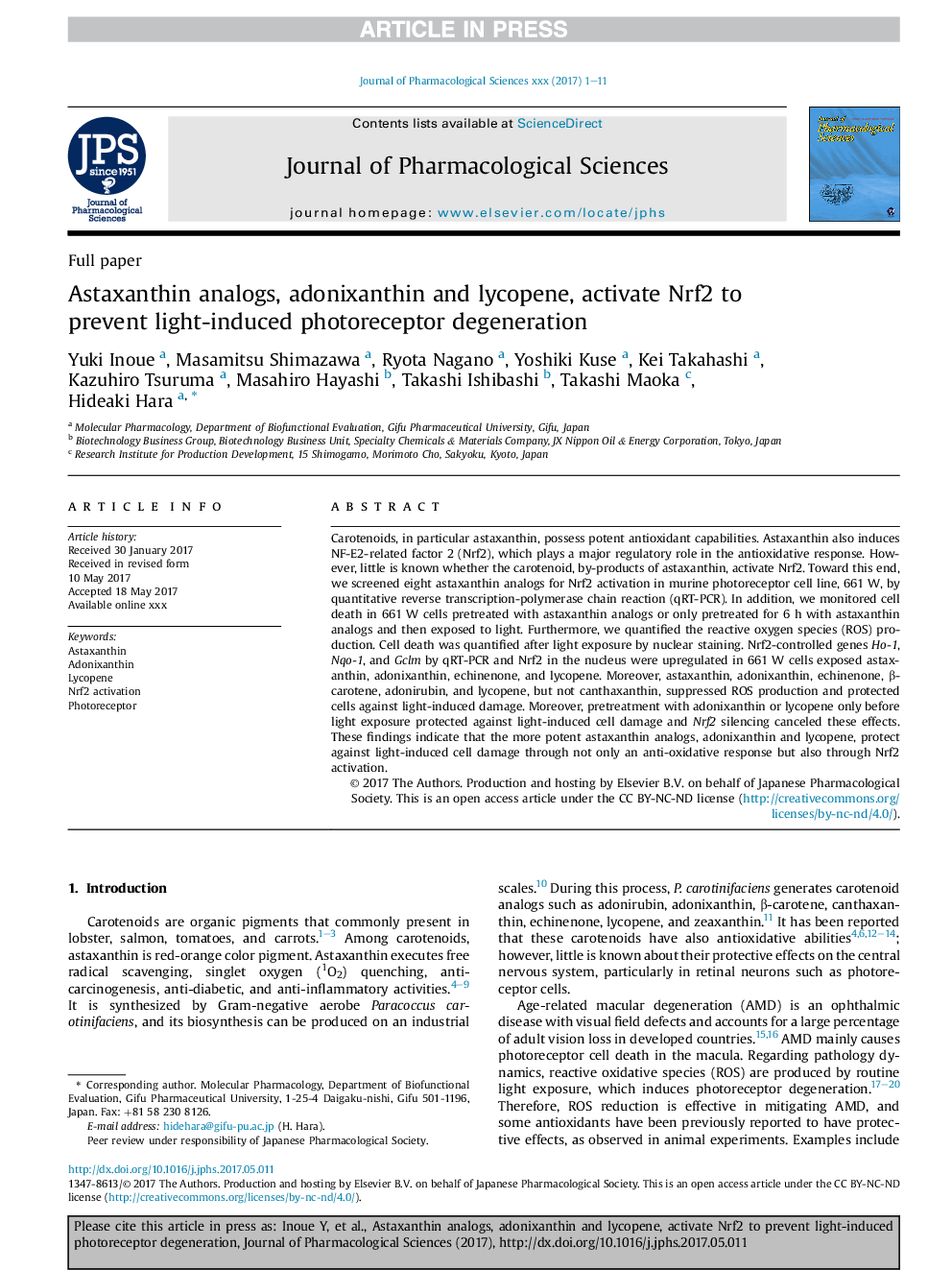| Article ID | Journal | Published Year | Pages | File Type |
|---|---|---|---|---|
| 8533116 | Journal of Pharmacological Sciences | 2017 | 11 Pages |
Abstract
Carotenoids, in particular astaxanthin, possess potent antioxidant capabilities. Astaxanthin also induces NF-E2-related factor 2 (Nrf2), which plays a major regulatory role in the antioxidative response. However, little is known whether the carotenoid, by-products of astaxanthin, activate Nrf2. Toward this end, we screened eight astaxanthin analogs for Nrf2 activation in murine photoreceptor cell line, 661 W, by quantitative reverse transcription-polymerase chain reaction (qRT-PCR). In addition, we monitored cell death in 661 W cells pretreated with astaxanthin analogs or only pretreated for 6 h with astaxanthin analogs and then exposed to light. Furthermore, we quantified the reactive oxygen species (ROS) production. Cell death was quantified after light exposure by nuclear staining. Nrf2-controlled genes Ho-1, Nqo-1, and Gclm by qRT-PCR and Nrf2 in the nucleus were upregulated in 661 W cells exposed astaxanthin, adonixanthin, echinenone, and lycopene. Moreover, astaxanthin, adonixanthin, echinenone, β-carotene, adonirubin, and lycopene, but not canthaxanthin, suppressed ROS production and protected cells against light-induced damage. Moreover, pretreatment with adonixanthin or lycopene only before light exposure protected against light-induced cell damage and Nrf2 silencing canceled these effects. These findings indicate that the more potent astaxanthin analogs, adonixanthin and lycopene, protect against light-induced cell damage through not only an anti-oxidative response but also through Nrf2 activation.
Related Topics
Health Sciences
Pharmacology, Toxicology and Pharmaceutical Science
Pharmacology
Authors
Yuki Inoue, Masamitsu Shimazawa, Ryota Nagano, Yoshiki Kuse, Kei Takahashi, Kazuhiro Tsuruma, Masahiro Hayashi, Takashi Ishibashi, Takashi Maoka, Hideaki Hara,
